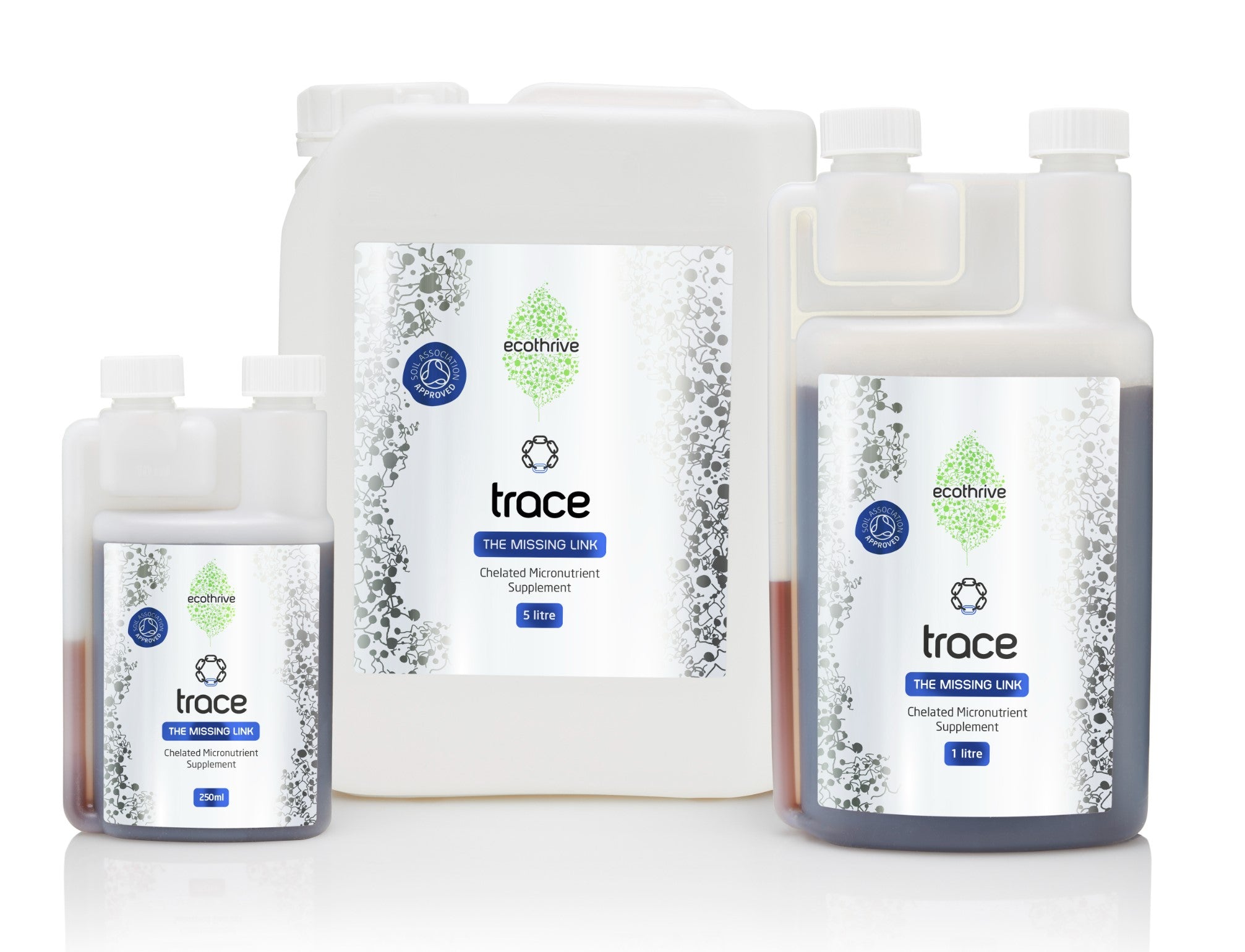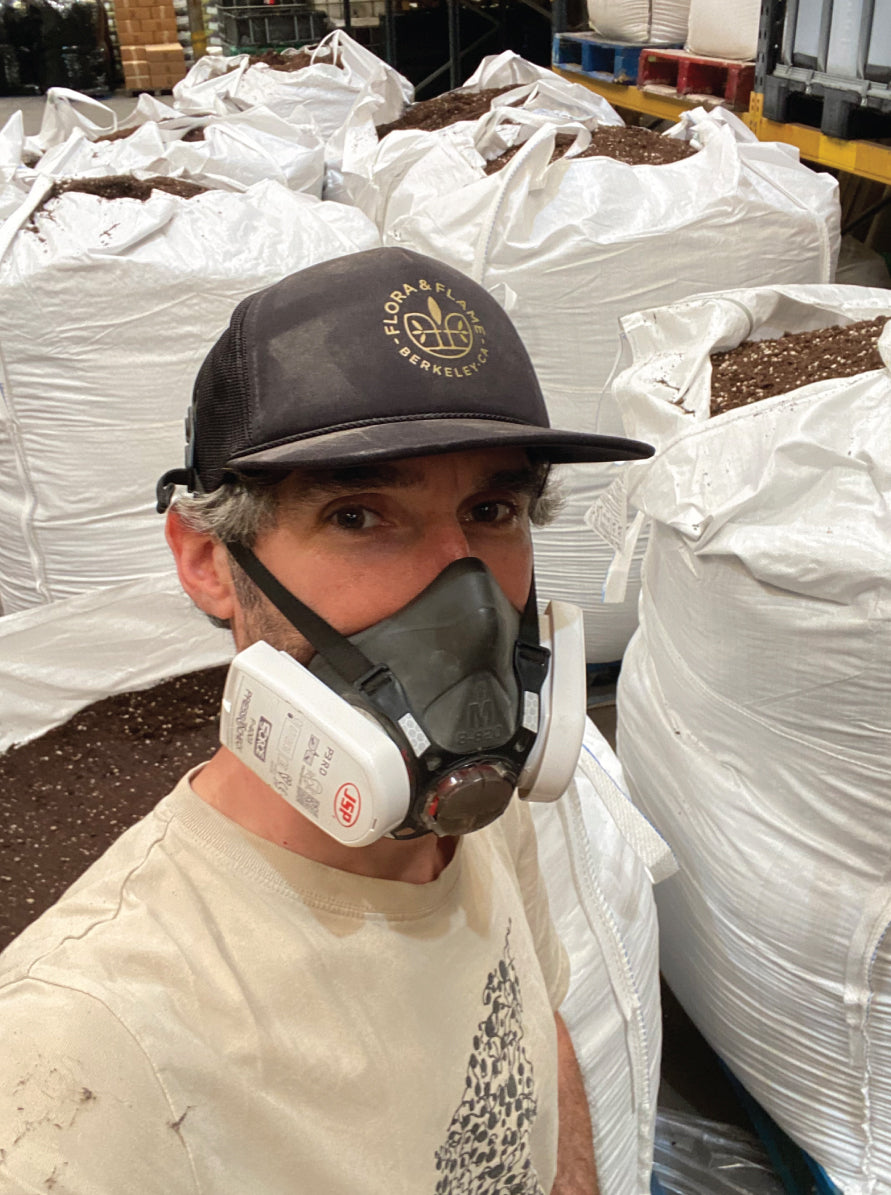Living soil growers are primarily focused on the health and nutritional content of their soil, rather than on directly feeding their plants. As a living soil cultivator, you’re managing an entire ecosystem. Don’t let this sound daunting. There’s an easy way to keep your living soil in great condition: top dressing.

Top dressing is one of the simplest yet most powerful tools for keeping living soils thriving. Practically speaking, top dressing is just adding a sprinkle of organic amendments to the surface of your soil. It’s a slow-release method that feeds your soil microbes, which in turn makes those nutrients available to your plants over time.
Growing in living soil is all about maintaining balance. Unlike mineral nutrient programmes (“Grow A” and “Grow B” etc) that feed plants directly, living soil relies on microbes to break down organic matter and cycle nutrients naturally. Top dressing keeps the soil food web humming with life, helping to ensure that your plants enjoy a steady supply of nutrients without the boom and bust of overfeeding and deficiencies.
Think of top dressing living soil as a way of working with nature, rather than against it. Amendments like worm castings, alfalfa, or mealworm frass, added to the surface of your living soil pots or beds, mimic the natural process of leaf litter breaking down on a forest floor. Over time, this practice strengthens your soil’s biology, improves nutrient retention, and even helps build soil structure, giving your plants a better foundation to thrive in.
In short, feed the life in your soil and your soil feeds your plants. In other words, when your soil thrives, so do your plants. Keep reading, and we’ll show you how to take your top-dressing game to the next level.
No-Till and Low-Till Methods for Living Soil Explained
Depending on your approach to soil, there are a couple of ways you can go about it: No-till or Low-till.
If you're following a No-till method, you’re likely familiar with the idea of disturbing the soil as little as possible. This approach focuses on protecting the microbial networks and fungal hyphae that build up in your soil over time. When it comes to amending in a No-till setup, you’ll want to focus on simply laying your amendments right on the surface. A common practice is to use a mulch layer with straw or hay. You can remove or gently lift that mulch to apply your top dress, or just apply over the top and shake it afterwards. The mulch acts as a protective barrier, preserving moisture and encouraging microbial activity near the surface, which gradually breaks down the nutrients and makes them available to your plants.
Now, if you’re leaning towards a Low-till method, you’re open to lightly working the top layer of soil. This method gives you the best of both worlds: you're keeping your microbial networks mostly intact, while also ensuring faster nutrient breakdown. By gently scratching in amendment blends into the top 2-4 cm, you’re increasing their contact with the soil and microbes that will do the hard work of breaking them down. This can lead to a quicker nutrient release, which is perfect if your plants are hungry or you’re looking to address a deficiency.
Deeper low-till methods also work well for rejuvenating soil at the end of a crop cycle, where the amendments are lightly mixed deeper into the living soil—around the top 20 - 25 cm (8 - 10”). (Obviously going this deep is only viable in between cycles otherwise you’d disturb and damage the plant roots!) Incorporating the amendments deeper into the soil improves their breakdown and conversion to nutrition throughout the soil profile.
Mixing the top 20 - 25 cm of soil also gives you the opportunity to assess the soil structure. Compaction can sometimes be an issue with living soil due to the high organic matter content, which can be corrected by adding extra pumice to provide more structure and aeration. As a guide, the incorporation of around 4-5% extra pumice is typically recommended every 3-4 growing cycles, but dig down, get dirty, and assess the soil yourself.
Whichever method you choose, amending your soil is concerned with feeding the life below ground so that your plants can thrive above it.
Pro Tip: When using the No-till method, consider adding worm castings with your top dress, or using a compost extract after top dressing. This helps kick-start the breakdown process and delivers a quick microbial boost to your soil.
Choosing the Right Organic Amendments for Living Soil
Selecting the best organic amendments for your living soil can be a balancing act. Each amendment has its own nutritional profile, so understanding the needs of your plants and soil is crucial. For instance, mealworm frass has a good balance of nitrogen and potassium, while rock phosphate provides phosphorus and calcium. Knowledge like this allows growers to add the right amendments in a tactical way, supplying key nutrients at specific life-cycle stages.
For growers who prefer a more broad-spectrum approach, amendments like alfalfa meal and worm castings are excellent all-rounders, promoting microbial activity while providing essential nutrients. For growers who prefer to keep things simple and straightforward, pre-formulated amendment blends are a great option. Check out our own pre-blended top dressing product, Ecothrive Life-Cycle.

Blends like this are designed to provide a balanced mix of nutrients, eliminating the guesswork involved in adding individual amendments. (You’re also tapping into the expertise and experience formed from countless growing trials here at Ecothrive HQ!)
Soil Testing for Precision Amending
If you’re serious about fine-tuning your top-dressing strategy, soil testing is invaluable. By sending a sample to a laboratory, you can determine the precise nutrient profile of your soil. Tests like Mehlich 3 or saturated paste tests give insight into available nutrients and those locked up in the soil.
Once you know what your soil is lacking, you can adjust your amendments with scientific precision. This helps avoid under- or over-amending, ensuring your plants get the right nutrients at the right time.

Check our Lab Services if you are interested in testing your soil and getting a customised amendment recommendation.
Pro Tip: If you're soil testing, take multiple samples from different parts of your grow area. This will give you a more accurate representation of your soil's health and help fine-tune your amendment plan.
Understanding Soil Volume and Amending Frequency
The volume of soil in your pots or beds directly affects how often you should top dress. Larger volumes of soil retain nutrients for longer, so you won’t need to amend as frequently. On the other hand, smaller pots deplete nutrients faster, requiring more regular top dressing.
Check the guidelines provided by your amendment manufacturer, as they often provide recommendations based on soil volume and plant requirements.
Calculating the Right Amount of Top Dressing
This is really important and some new living soil growers get this wrong! When determining how much to top dress, focus on the top 15 cm of soil in your pots or beds, as this is where most of the biological activity occurs. Don’t use the entire volume of your pots or beds as the multiplier. If you do, you’ll invariably end up adding too much to the surface creating a 'hot layer' of excess nutrients that could disrupt the balance of your soil’s microbiology.
We call the volume of soil contained in the top 15 cm the “Target Top-Dress Volume” and it’s this number that you should use, not the total volume of your pots or beds.
For growers using Grassroots Living Soil Beds, here’s a guide:

For growers using Grassroots Living Soil Pots, here’s is a guide:

What Happens When I Add Too Much Good Stuff?
Don’t make the mistake of going overboard with amendments. Over-amending can upset the balance of your living soil and, when too many nutrients are added at once, it can create a feeding frenzy among the larger soil organisms like springtails, rove beetles, woodlice, and fungus gnat larvae. These creatures can then turn to plant roots as a food source once the top dress is depleted.
To avoid this, simply follow our guidelines above, using the Target Top-Dress Volume and you’ll avoid over-stimulating your soil and applying too much nutrition.
Impact of Environmental Factors on Nutrient Uptake
Environmental conditions like temperature, humidity and light levels play a key role in how effectively plants take up nutrients. High temperatures, for example, can increase the rate of water and nutrient uptake, which can deplete the soil faster.
Adjusting your environment to suit your plants’ needs ensures they are getting the most from your top dressing. Keep an eye on temperature and humidity, adjusting as needed throughout the growing cycle. Read our guide on VPD here.
Genetics and Nutrient Uptake
Growing is a journey and it can take time to properly dial things in. Plant genetics influence nutrient uptake and different cultivars have varying nutrient needs, with some being more efficient at using specific nutrients. Practical experience growing a particular cultivar can help you to adapt and tailor your top-dressing approach over time. It’s all about careful observation and note-taking, then making small changes if necessary.
Mastering Top Dressing for Healthy Living Soil
Getting top dressing in living soil right is all about balance, observation and understanding the unique needs of your plants. By choosing the right amendments, calculating how much to apply and considering factors like soil volume, plant genetics and your growing environment, you’ll create a thriving ecosystem below ground that will support healthy plant growth above it.

Follow our guidelines, observe the plant response and don’t overthink things. Remember, plants naturally select and uptake what they need from the soil. A few grams extra of one amendment or another over a soil bed isn’t going to be a “make or break” decision. Instead, relax and enjoy this richly-rewarding pursuit and natural way of growing. Seriously—we couldn’t encourage you more to just dive in and start growing with living soil. It’s a totally different vibe to working with liquid mineral feeds and feels a whole lot more natural and holistic.
Living soil is dynamic and, by nurturing it with regular top dressing, growers often see better results with each growing cycle—which only adds to the excitement and satisfaction!
Ready to elevate your living soil game? Shop our range of organic solutions and let’s grow together.




Leave a comment
This site is protected by hCaptcha and the hCaptcha Privacy Policy and Terms of Service apply.